Recent Articles
Popular Makes
Body Types
10 Top American Hatchbacks
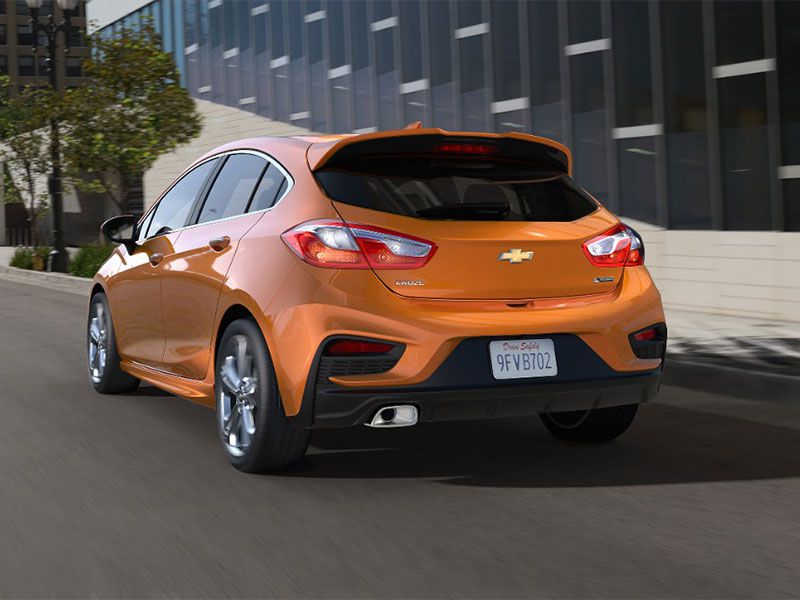
2017 Chevrolet Cruze hatchback rear ・ Photo by General Motors
Customers for American hatchbacks face a surprising situation: Just two mainstream U.S. auto brands offer cars with that bodystyle, and one brand in specific furnishes five of them — half of the hatchbacks on today’s top-10 list. But while the choices here are few, their advantages are many. The chief one, of course, is that hatchbacks are much more versatile than similarly sized sedans.
For vehicles that come in both sedan and hatchback styles, hatches tend to be more nimble in size than their sedan counterparts, yet they actually deliver more standard and available cargo space. And that’s usually without affecting room for passengers. So you could say that hatchbacks are the crossovers of the car world. So here are the hatchbacks we consider to be the top American models right now.
2016 Chevrolet Spark
To end the suspense, it’s the Bowtie brand with the most American hatchbacks, although many of those vehicles—like the 2016 Chevrolet Spark—have global roots. Here in the U.S., Chevy’s city-sized car provides customers with 11.1 cubic feet of cargo space in its rear hatch, along with 27.2 cubic feet when the back seats are both folded. It’s a relatively efficient use of space, too: The Ford Fiesta hatchback is more than 16 inches longer on the outside, but the Spark has an extra 1.8 cubic feet of room for cargo. And for 2016, the Spark adds a new engine with extra power and fuel efficiency, extra infotainment tech (like Android Auto/Apple CarPlay smartphone integration), and extra driver-assistance technologies such as forward collision alert, lane departure warning and forward collision alert.
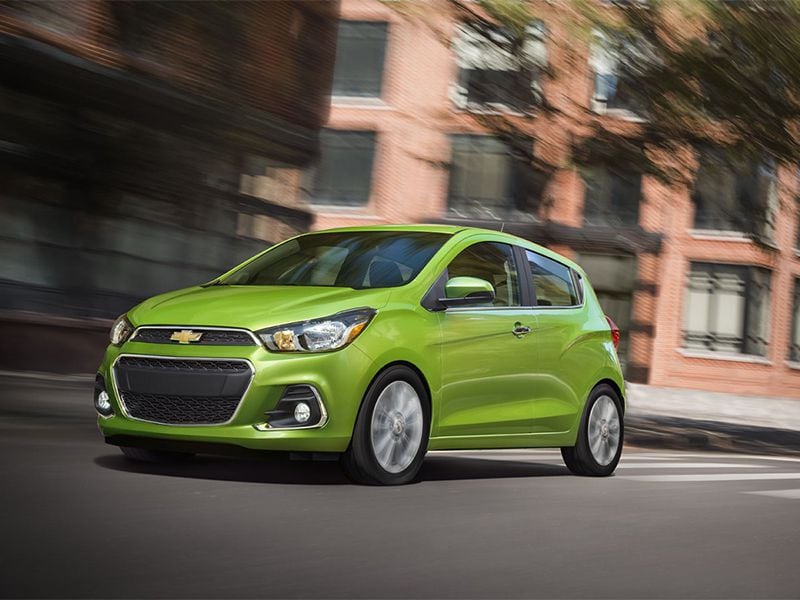
Photo by Chevrolet
2017 Chevrolet Sonic
The 2017 Chevrolet Sonic is another of the brand’s American hatchbacks with notable upgrades to report. Its exterior, for example, has been refreshed front and back, with a highlight being a new front fascia with a wider, slimmer grille and front intake. LED daytime running lights and new wheel designs further emphasize the Sonic’s more athletic look. Inside, the Sonic showcases first-in-segment amenities such as a power-adjustable driver’s seat and support for Android Auto and Apple CarPlay smartphone integration. Chevy also heats up the Sonic hatch with a sporty RS trim for 2017. As for what that hatch can hold, that would be 19 cubic feet with rear seats up, and 47.7 seats down; that compares to 14.9 cubic feet in the trunk of a Sonic sedan.

Photo by Chevrolet
2017 Chevrolet Cruze
Despite the increased popularity of trucks, SUVs and crossovers, one of the fastest-growing segments in terms of new entries is mainstream compact hatches. In 2016, there’s was just one of them from the traditional top six car brands (Chevy, Dodge, Ford, Honda, Nissan and Toyota). For 2017, there will be four, including the revived Honda Civic and Toyota Corolla hatches and two American hatchbacks: the Ford Focus—see below—and the new 2017 Chevrolet Cruze hatchback. The Cruze sedan was all-new for 2016, and the new body style benefits from all of those changes plus a nice boost in cargo space. More specifally, where the sedan supplies a 14.9-cubic-foot trunk, the hatchback has a standard 18.5-cubic-foot cargo hold and a maximum cargo capacity of 47.2 cubic feet.
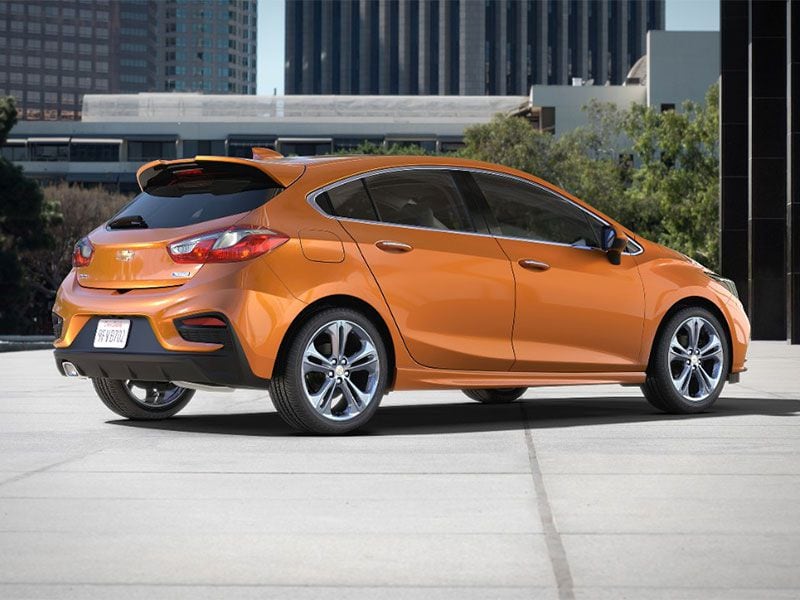
Photo by General Motors
2016 Chevrolet Volt
American hatchbacks with alternative fuel powertrains include the all-new 2016 Chevrolet Volt. Not to be confused with the all-electric Chevy Bolt that we detail next, the next-gen Volt does have a fairly robust electric-drive unit of its own, and that’s with a 53-mile range, according to the EPA. But it also carries a gasoline-fuelled turbo engine that can take over if the Volt’s battery becomes depleted. At that stage, the Volt operates as a hybrid, with the ability to travel another 370 miles while achieving 42 MPG in combined driving. Oh, and for our purposes, the Volt’s rear cargo space has a 10.6-cubic-foot capacity. The backs of the car’s 60/40-split rear seats can be folded, too, for when additional space is needed.
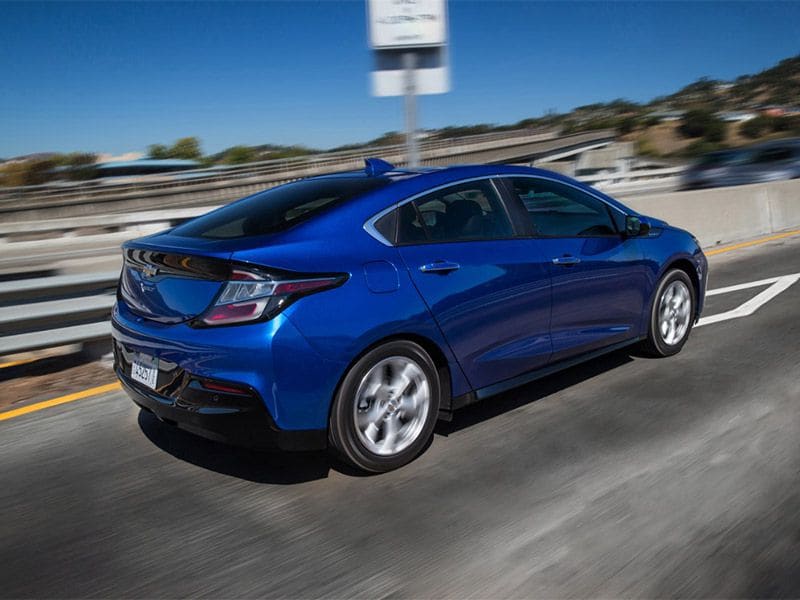
Photo by Chevrolet
2017 Chevrolet Bolt
Ready to go all-in on the EV revolution? The 2017 Chevrolet Bolt was designed to be both affordable and practical. Thus, Chevy set its starting price at $37,495, which means that its net cost with an available federal tax credit is under $30K. For practicality’s sake, the Bolt is backed by a 60-kWh lithium-ion battery system and an EPA-certified driving range of 238 miles on a single charge. Also plenty practical is the Bolt’s “5-door” body-style. That allows the Bowtie brand’s groundbreaking EV to complement its impressive efficiency with the same kind of versatility found in conventional American hatchbacks. Indeed beyond its 16.9 cubic feet of standard storage space, the Bolt is bolstered by a cavernous 56.6 overall.
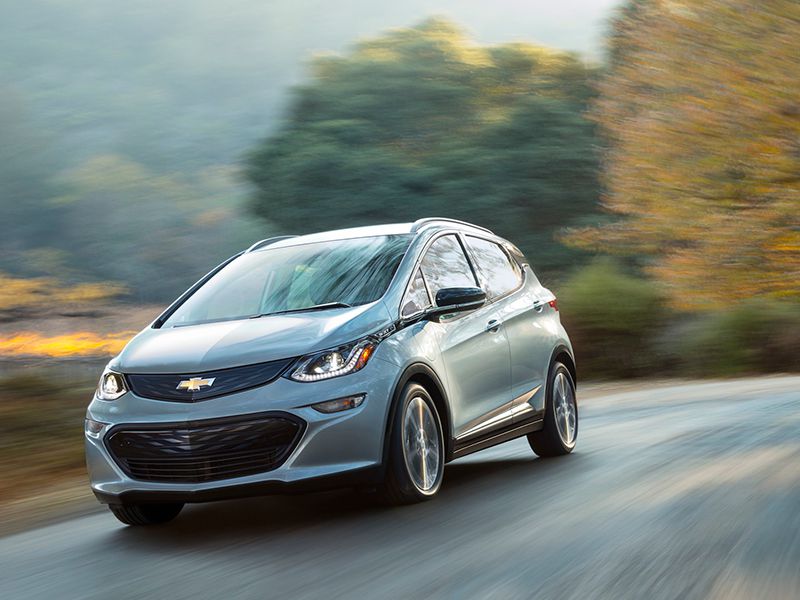
Photo by General Motors
2016 Ford Fiesta
The Blue Oval doesn’t field quite as many American hatchbacks as its cross-town rival, but there’s certainly no shortage of powertrains for the ones it does have. Take the 2016 Ford Fiesta, which serves up three for its hatchback bodystyle: a standard 4-cylinder engine, a high-efficiency EcoBoost 3-cylinder choice and a separate, high-performance EcoBoost unit for the Fiesta ST. To be clear, though, that 197-horsepower engine, and the ST trim, are reserved for hatchback Fiestas. The hatchback’s advantages naturally extend to cargo space as well. With 25.4 cubic feet in total, the hatch nearly doubles the carrying capacity of the sedan’s trunk. It’s also worth noting that the Fiesta hatchback has 14.9 cubic feet of space available for gear with its rear seats occupied.
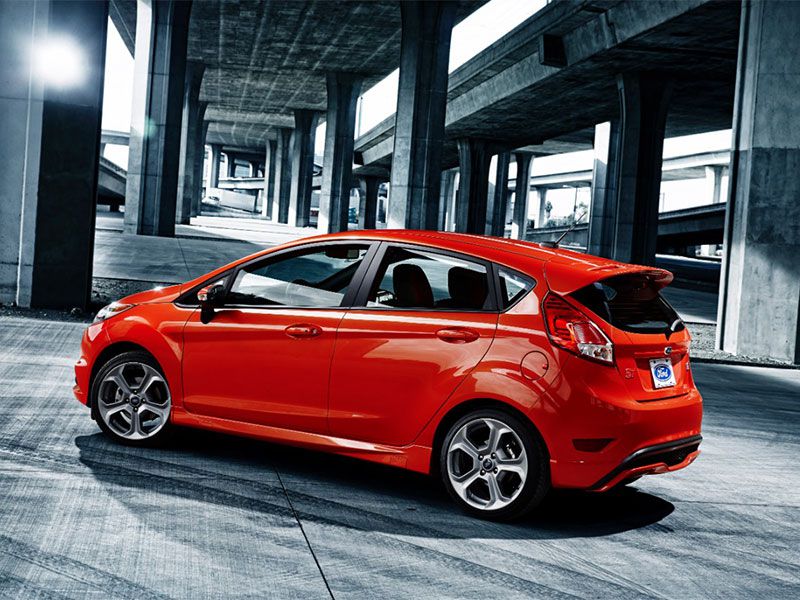
Photo by Ford
2016 Ford Focus
It’s a similar story for the compact entry among Ford’s American hatchbacks: The 2016 Ford Focus can be ordered with any one of five different powerplants, from the 1.0-liter EcoBoost also found in the Fiesta to the 350-horsepower unit in the hottest of the Focus hatches, the all-wheel drive RS edition. There’s even an all-electric setup for the aptly named Focus Electric. Yet the distinguishing aspect of the hatchback models—especially versus the sedans—is found at the other end of the vehicles. That’s where the standard Focus has storage for up to 43.9 cubic feet of stuff. Given that the trunk of the Focus sedan tops out at 13.2 cubic feet, hatch owners gain an increase in cargo volume of more than 232 percent.
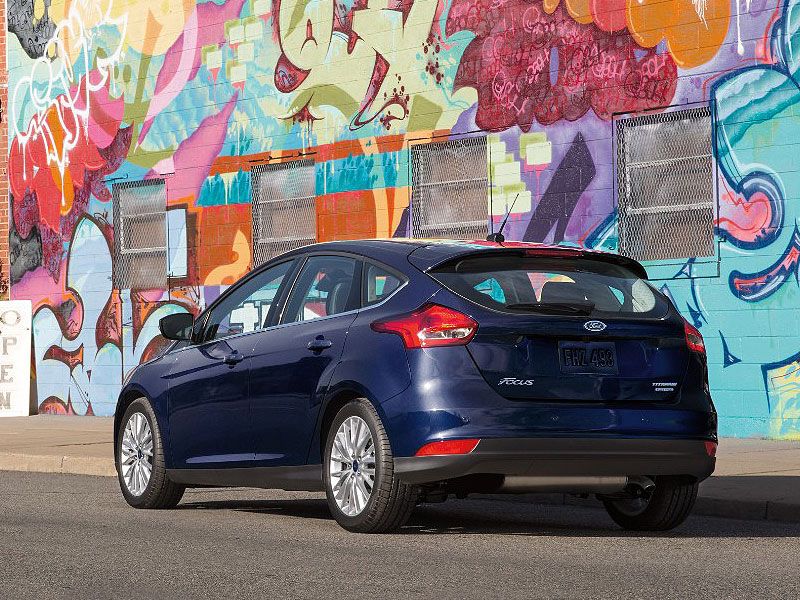
Photo by Ford
2016 Ford C-MAX
The 2016 Ford C-MAX doesn’t have a sedan sibling in the Blue Oval lineup, and nor does it have much in the way of competition in the marketplace. That’s because the C-MAX is sort of a segment-breaker, with taller proportions than typical American hatchbacks. What it does have is a choice between hybrid and plug-in hybrid powertrains. The former scores up to 41 MPG with the EPA, and the latter combines a 20-mile EV driving range with 530 miles of hybrid travel. The shape of the C-MAX also enables owners to put up to 24.5 cubic feet of stuff behind the rear seats, or pack in up to 52.6 cubic feet behind the front row.
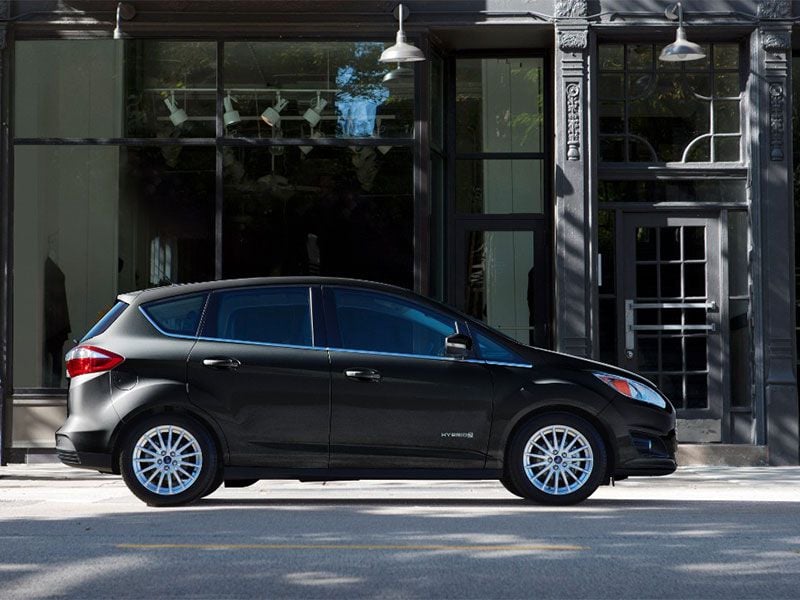
Photo by Ford
2016 Tesla Model S
The 2016 Tesla Model S breaks with sport-sedan convention in many ways, not the least of which has to do with its interior versatility. As a case in point, instead of a “normal” trunk, the Model S has a rear liftgate that reveals an unexpectedly large storage area: It can hold more than 30 cubic feet of gear—or two small children. It’s no joke, either, as the Tesla has an available, rear-facing third row that also can be tucked away in the floor of the trunk when not carrying kids. (Don’t forget that, without a traditional gas engine, the Model S also has more storage up front, where that engine usually goes.)
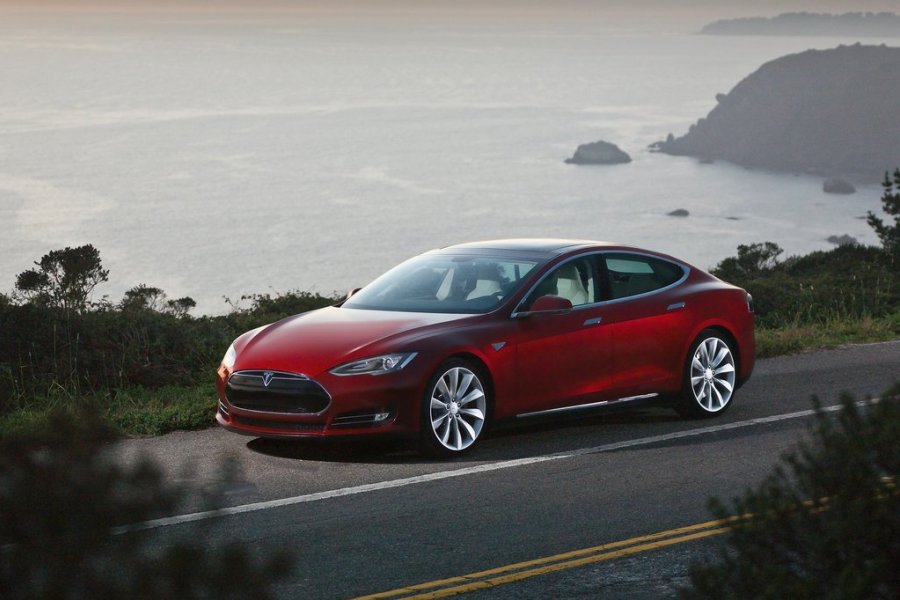
Photo by Tesla
2016 Nissan LEAF
The 2016 Nissan LEAF may not be American branded, however it is built in this country. Which isn’t necessarily true of some of the other so-called “American hatchbacks.” More specifically, both the LEAF and its battery packs are assembled at Nissan’s U.S. manufacturing facilities in Smyrna, Tenn. Customers also should keep in mind that among those LEAF batteries is a new 30-kWh unit that ups LEAF range to 107 miles. Turning to the vehicle’s hatchback resume, that includes 23.6 cubic feet of storage in its standard, 2-row configuration. Putting down the rear seatbacks will result in a modest increase to 30 cubic feet.
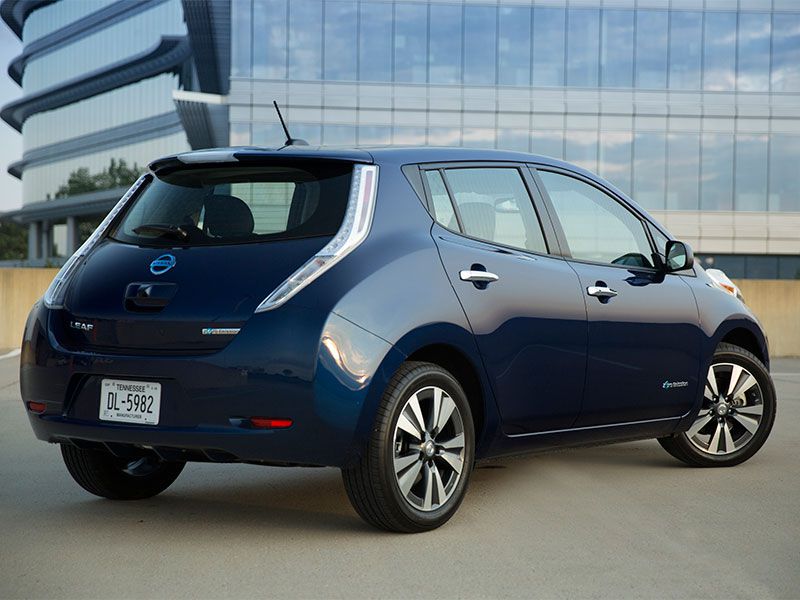
Photo by Nissan